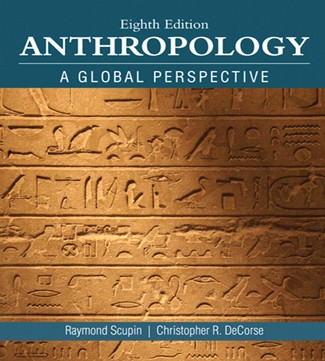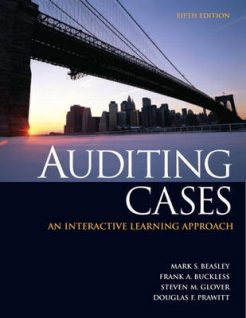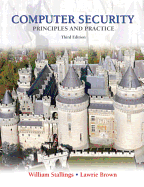Description
ISBN-10: 0134114078
ISBN-13: 9780134114071 978-0134114071
CHAPTER 3
EVOLUTION
True-False Questions
1. Cosmologies account for the ways in which supernatural forces and beings fashioned the world and all living things.
Answer: T
Topic: Cosmologies and Human Origins
Learning Objective: LO 3.1 Explain how cosmologies regarding human origins differ from scientific views of evolution.
Skill Level: Understand the Concepts
Difficulty Level: Easy
2. Uniformitarianism was developed by Georges Cuvier.
Answer: F
Topic: The Scientific Revolution
Learning Objective: LO 3.2 Discuss how the scientific revolution provided the context for the theory of evolution.
Skill Level: Remember the Facts
Difficulty Level: Easy
3. The theory of natural selection was arrived at simultaneously and independently by two different scholars.
Answer: T
Topic: Theory of Evolution
Learning Objective: LO 3.3 Explain how Darwin’s view of natural selection and evolution differed from earlier scientific views.
Skill Level: Remember the Facts
Difficulty Level: Easy
4. Variation within species and reproductive success are the basis of natural selection.
Answer: T
Topic: Theory of Evolution
Learning Objective: LO 3.3 Explain how Darwin’s view of natural selection and evolution differed from earlier scientific views.
Skill Level: Understand the Concepts
Difficulty Level: Easy
5. Alfred Russel Wallace spent five years as the naturalist aboard the HMS Beagle observing nature and collecting plants and animals from around the world.
Answer: F
Topic: Theory of Evolution
Learning Objective: LO 3.3 Explain how Darwin’s view of natural selection and evolution differed from earlier scientific views.
Skill Level: Remember the Facts
Difficulty Level: Easy
6. Charles Darwin can be considered an “armchair biologist” because his theories are based on the fieldwork of other researchers.
Answer: F
Topic: Theory of Evolution
Learning Objective: LO 3.3 Explain how Darwin’s view of natural selection and evolution differed from earlier scientific views.
Skill Level: Remember the Facts
Difficulty Level: Easy
7. The observed differences in the beaks of the finches living in the Galapagos Islands provide a good example of inheritance of acquired characteristics.
Answer: F
Topic: Theory of Evolution
Learning Objective: LO 3.3 Explain how Darwin’s view of natural selection and evolution differed from earlier scientific views.
Skill Level: Understand the Concepts
Difficulty Level: Difficult
8. Darwin did not understand the principles of heredity.
Answer: T
Topic: Principles of Inheritance
Learning Objective: LO 3.4 Discuss Gregor Johann Mendel’s principles of inheritance.
Skill Level: Remember the Facts
Difficulty Level: Moderate
9. Dominant traits will replace recessive ones because dominant traits are always superior to recessive ones.
Answer: F
Topic: Principles of Inheritance
Learning Objective: LO 3.4 Discuss Gregor Johann Mendel’s principles of inheritance.
Skill Level: Understand the Concepts
Difficulty Level: Moderate
10. Dominant alleles (genes) are only expressed in the phenotype when they are in a homozygous state.
Answer: F
Topic: Principles of Inheritance
Learning Objective: LO 3.4 Discuss Gregor Johann Mendel’s principles of inheritance.
Skill Level: Understand the Concepts
Difficulty Level: Moderate
11. Gametes are produced by meiosis.
Answer: T
Topic: Inheritance and Molecular Genetics
Learning Objective: LO 3.5 Discuss how Mendel’s principles of inheritance have changed in light of a better understanding of molecular genetics.
Skill Level: Remember the Facts
Difficulty Level: Easy
12. Amino acids are an important building block of proteins.
Answer: T
Topic: Inheritance and Molecular Genetics
Learning Objective: LO 3.5 Discuss how Mendel’s principles of inheritance have changed in light of a better understanding of molecular genetics.
Skill Level: Remember the Facts
Difficulty Level: Easy
13. Evolution refers to change in the genetic makeup of a population over time.
Answer: T
Topic: Theory of Evolution
Learning Objective: LO 3.3 Explain how Darwin’s view of natural selection and evolution differed from earlier scientific views.
Skill Level: Understand the Concepts
Difficulty Level: Easy
14. An example of an epigenetic factor is the way a species alters its environment, making certain characteristics more or less beneficial.
Answer: F
Topic: Population Genetics and Evolution
Learning Objective: LO 3.6 Define and discuss how evolution takes place.
Skill Level: Understand the Concepts
Difficulty Level: Moderate
15. Gene flow may be influenced by cultural factors such as religious practices and socioeconomic status.
Answer: T
Topic: Population Genetics and Evolution
Learning Objective: LO 3.6 Define and discuss how evolution takes place.
Skill Level: Apply What You Know
Difficulty Level: Moderate
16. Chance loss of genetic material from a population can cause genetic drift.
Answer: T
Topic: Population Genetics and Evolution
Learning Objective: LO 3.6 Define and discuss how evolution takes place.
Skill Level: Understand the Concepts
Difficulty Level: Easy
17. By definition, genetic mutation is detrimental to the survival of a species.
Answer: F
Topic: Population Genetics and Evolution
Learning Objective: LO 3.6 Define and discuss how evolution takes place.
Skill Level: Understand the Concepts
Difficulty Level: Easy
18. Researchers use the Hardy-Weinberg theory of genetic equilibrium to evaluate evolutionary change.
Answer: T
Topic: How Do New Species Originate?
Learning Objective: LO 3.7 Discuss how and why new species arise.
Skill Level: Remember the Facts
Difficulty Level: Easy
19. A problem with accepting creationism as science is that its assertions are inherently not testable.
Answer: T
Topic: How Do New Species Originate?
Learning Objective: LO 3.7 Discuss how and why new species arise.
Skill Level: Understand the Concepts
Difficulty Level: Easy
20. Charles Darwin was influenced strongly by Linnaeus’s idea that more organisms are born than can possibly survive to adulthood and reproduce.
Answer: F
Topic: Theory of Evolution
Learning Objective: LO 3.3 Explain how Darwin’s view of natural selection and evolution differed from earlier scientific views.
Skill Level: Remember the Facts
Difficulty Level: Difficult
Multiple-Choice Questions
21. Most cultures have developed sophisticated ideas and myths to provide answers to fundamental questions such as: “Who are we?” “Where did we come from?” and “Why are we here?” These conceptual frameworks that present the universe as an orderly system and answer these basic questions are called __________.
A. analogs
B. cosmologies
C. paradigms
D. apologies
Answer: B
Topic: Cosmologies and Human Origins
Learning Objective: LO 3.1 Explain how cosmologies regarding human origins differ from scientific views of evolution.
Skill Level: Remember the Facts
Difficulty Level: Easy
22. Using the generations (begats) mentioned in the Bible, __________ calculated that the earth was created in the year 4004 B.C.
A. Gregor Mendel
B. James Hutton
C. Charles Lyell
D. James Ussher
Answer: D
Topic: Cosmologies and Human Origins
Learning Objective: LO 3.1 Explain how cosmologies regarding human origins differ from scientific views of evolution.
Skill Level: Remember the Facts
Difficulty Level: Easy
23. The idea that organisms change during their lifetime and pass those changes on to their offspring is known as the theory of __________.
A. scientific creationism
B. acquired characteristics
C. catastrophism
D. spontaneous generation
Answer: B
Topic: Theory of Evolution
Learning Objective: LO 3.3 Explain how Darwin’s view of natural selection and evolution differed from earlier scientific views.
Skill Level: Remember the Facts
Difficulty Level: Easy
24. The idea that individuals have characteristics (variations) that allow them to survive in a particular environment and reproduce, passing these traits on to their progeny, is known as __________.
A. random chance
B. uniformitarianism
C. heritability
D. natural selection
Answer: D
Topic: Theory of Evolution
Learning Objective: LO 3.3 Explain how Darwin’s view of natural selection and evolution differed from earlier scientific views.
Skill Level: Understand the Concepts
Difficulty Level: Easy
25. The theory of evolution by natural selection was proposed by __________.
A. Copernicus and Galileo
B. Thales of Mitetus
C. Darwin and Wallace
D. Mendel and Buffon
Answer: C
Topic: Theory of Evolution
Learning Objective: LO 3.3 Explain how Darwin’s view of natural selection and evolution differed from earlier scientific views.
Skill Level: Remember the Facts
Difficulty Level: Easy
26. The recent study (1973) by the Grants in the Galapagos Islands documented a drought that dramatically changed the availability of food to the island’s finches. Finches with larger beaks tended to survive the drought over other finches with smaller beaks. This study illustrates __________.
A. mutation
B. organic change
C. random choice
D. natural selection
Answer: D
Topic: Theory of Evolution
Learning Objective: LO 3.3 Explain how Darwin’s view of natural selection and evolution differed from earlier scientific views.
Skill Level: Understand the Concepts
Difficulty Level: Easy
27. A population of finches contains individuals with beaks that range from small to large. Finches with larger beaks can more easily break shells and extract food in times of stress. If the environment becomes very dry and most plants (food) die, then there will be __________.
A. no change in the percentages of finches with large and small beaks
B. more finches with smaller beaks
C. an increase in all types of finches
D. more finches with larger beaks
Answer: D
Topic: Theory of Evolution
Learning Objective: LO 3.3 Explain how Darwin’s view of natural selection and evolution differed from earlier scientific views.
Skill Level: Apply What You Know
Difficulty Level: Moderate
28. The study by the Grants in the Galapagos showed that finches with larger beaks could survive lower rainfall because their larger beaks allowed them to secure more food when compared to finches with smaller beaks. This shows how __________.
A. natural selection acts on variation within a species
B. spontaneous mutation causes evolution
C. gene flow allows for the survival of the species
D. inbreeding cannot occur between individuals with different acquired characteristics
Answer: A
Topic: Theory of Evolution
Learning Objective: LO 3.3 Explain how Darwin’s view of natural selection and evolution differed from earlier scientific views.
Skill Level: Understand the Concepts
Difficulty Level: Moderate
29. Alternate forms of the same gene are known as __________.
A. heterozygotes
B. alleles
C. genotypes
D. phenotypes
Answer: B
Topic: Principles of Inheritance
Learning Objective: LO 3.4 Discuss Gregor Johann Mendel’s principles of inheritance.
Skill Level: Remember the Facts
Difficulty Level: Easy
30. The actual genetic constitution of an organism is referred to as the __________, while the outward appearance of the organism is called the __________.
A. homozygote; heterozygote
B. allele; gene
C. genotype; phenotype
D. recessive; dominant
Answer: C
Topic: Principles of Inheritance
Learning Objective: LO 3.4 Discuss Gregor Johann Mendel’s principles of inheritance.
Skill Level: Remember the Facts
Difficulty Level: Easy
31. The replication of body cells is known as __________, and the replication of sex cells is known as __________.
A. mitosis; pleiotropy
B. meiosis; pleiotropy
C. mitosis; meiosis
D. translation; transcription
Answer: C
Topic: Inheritance and Molecular Genetics
Learning Objective: LO 3.5 Discuss how Mendel’s principles of inheritance have changed in light of a better understanding of molecular genetics.
Skill Level: Remember the Facts
Difficulty Level: Moderate
32. Alleles occur in pairs, and when gametes are formed only one of each pair of alleles is present in the sex cell. This allows __________ to operate.
A. Wallace’s principle of segregation
B. Darwin’s principle of adaptation
C. Mendel’s principle of independent assortment
D. Lamarck’s law of gamete formation
Answer: C
Topic: Inheritance and Molecular Genetics
Learning Objective: LO 3.5 Discuss how Mendel’s principles of inheritance have changed in light of a better understanding of molecular genetics.
Skill Level: Understand the Concepts
Difficulty Level: Moderate
33. The principle of segregation and the principle of independent assortment were developed by __________.
A. Charles Darwin and Alfred Russel Wallace
B. Jean-Baptiste de Lamarck
C. Gregor Johann Mendel
D. James Watson and Francis Crick
Answer: C
Topic: Principles of Inheritance
Learning Objective: LO 3.4 Discuss Gregor Johann Mendel’s principles of inheritance.
Skill Level: Remember the Facts
Difficulty Level: Easy
34. A human somatic cell contains __________ chromosomes.
A. 23
B. 49
C. 46
D. 92
Answer: C
Topic: Inheritance and Molecular Genetics
Learning Objective: LO 3.5 Discuss how Mendel’s principles of inheritance have changed in light of a better understanding of molecular genetics.
Skill Level: Remember the Facts
Difficulty Level: Easy
35. A molecule of DNA looks like a __________.
A. triangle
B. circle
C. gamete
D. double helix
Answer: D
Topic: Inheritance and Molecular Genetics







Reviews
There are no reviews yet.